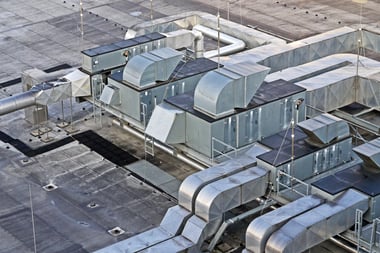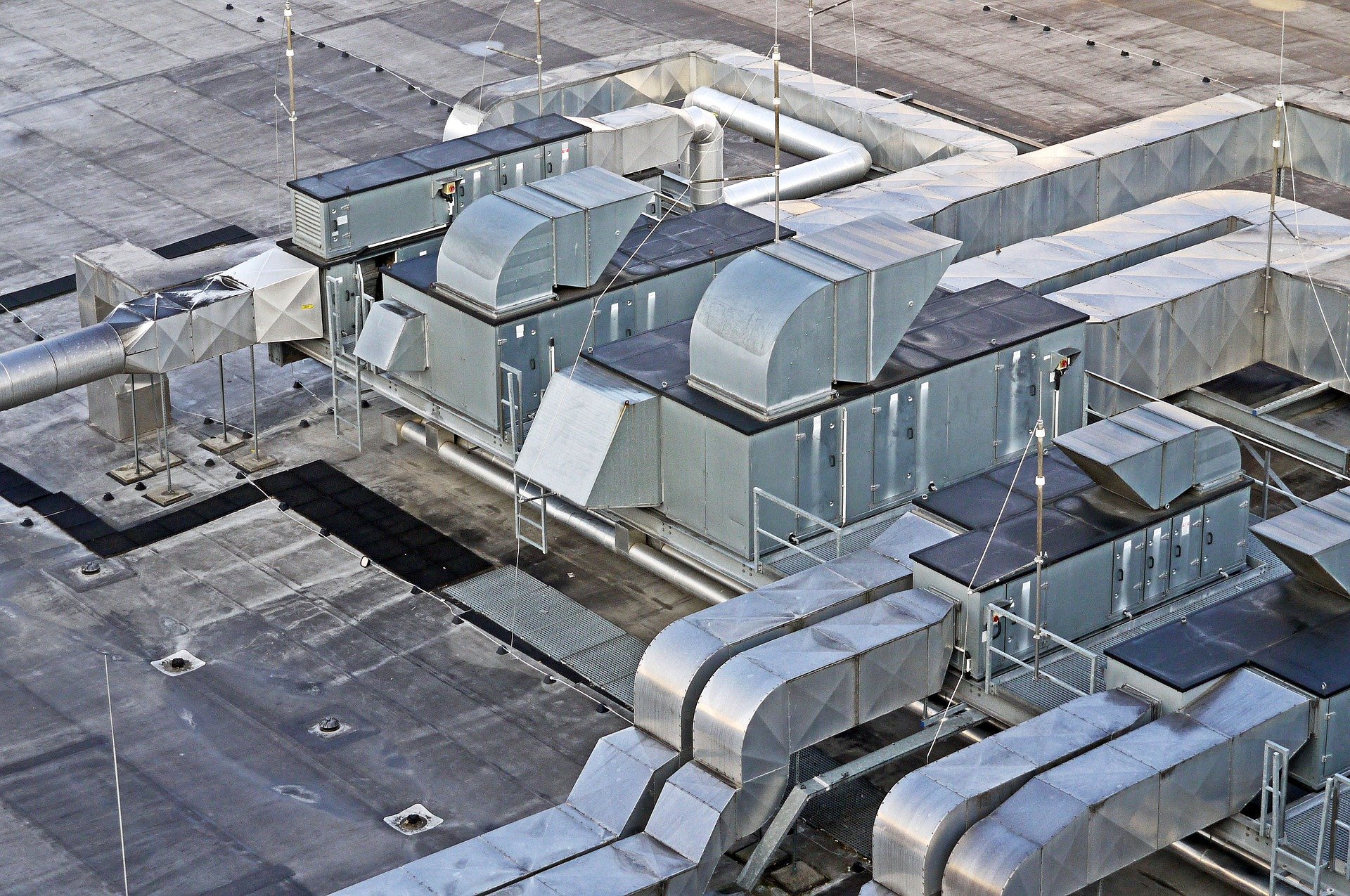
Commercial roof surfaces can often be an intense complex of pipe networks, platforms, HVAC equipment, and increasingly, smart technology, that needs to be organized and strongly secured to the building rooftop as a vital part of proper building safety and function. Both in the past and even in the present, it is easy for building owners to feel either real or perceived financial pressures to cut corners or improvise some of this securing and organization by using relatively cheap and temporary means of supports to include impromptu wood blocks and scaffolding, concrete block and rope, and other loose materials. But all buildings are serious investments. The problem is that while temporarily effective, such measures often lead to greater costs and consequences rather quickly down the road.
Since the advent of adjustable roof support systems, including the arrival of systems like PHP’s zero penetration roof supports on the scene, building owners have the availability to choose a roof support system that can last and perform for them over their building’s entire lifetime with relatively minimal maintenance. Pre-fabricated roof support systems have many key advantages for your building rooftop.
Roof supports are quite versatile in that they are like a kit of parts that can be arranged and engineered to a particular roof design. They can even be reconfigured as the needs of your building roof may grow and change. From a cost perspective, roof support systems may indeed cost more in the short term. However, they are durable. They are almost exclusively designed and made of durable metals that do not deteriorate over time. Therefore they will actually save a building owner money over the lifetime of their building. Also it is worth noting that failing to properly secure rooftop equipment to a building would likely cause a costly violation of the terms of any roof warranty that might exist.
In addition to the durability advantage, they have a design advantage because these systems of roof supports are rigorously designed and engineered for high performance and to strongly and properly secure to the roof surface. Both on a day to day basis, and in storm conditions, roof supports are designed to work with the existing roof surface and to inflict minimal damage to the roof landscape in the event of a storm. Materials like wood and concrete block that are not designed to be secured to the roof can cause costly and unpredictable leaks, penetrations, and failures in the roof. That is in contrast to roof support systems that in conjunction with walkway systems, can actually help to protect and act with the roof. Federal organizations like the Federal Emergency Management Agency (FEMA) and Occupational Safety and Health Administration OSHA, have more stringent rules for securing roof equipment in high wind and high risk areas, so it is imperative to know what kind of roof supports the code requires in your locale.
From a safety and code standpoint, roof supports are the only wise option. Placing rooftop equipment directly on your roof without proper supports is not only contrary to almost every local building code as mandated by the International Code Council, but can be extremely dangerous as intense winds and storms have the potential to carry any unsecured rooftop equipment to the ground below, not only damaging or destroying the equipment, but potentially injuring people.





